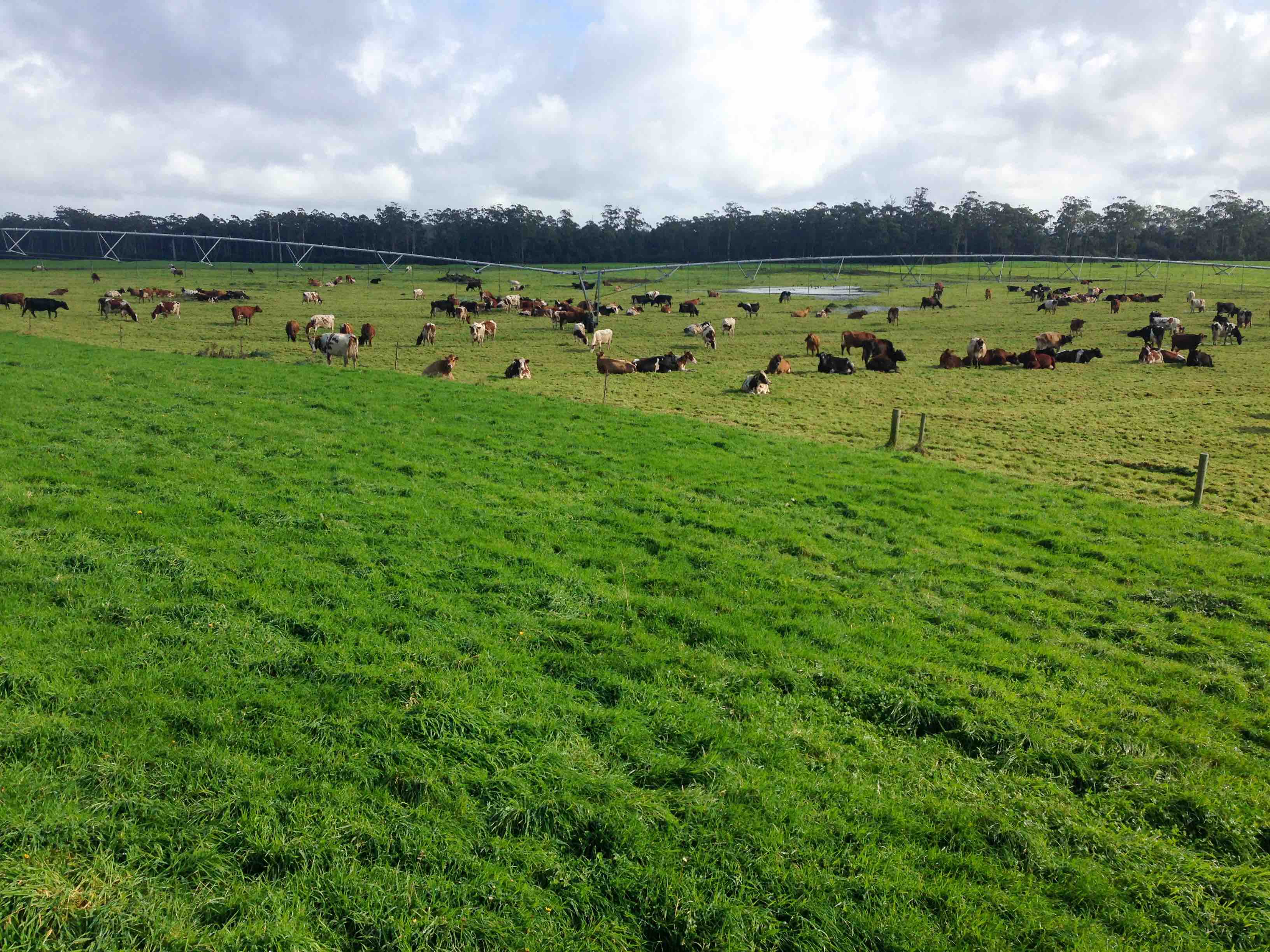What is break fencing?
Break fencing is a grazing management practice where temporary fences are erected to protect recently grazed pasture from back grazing (back fencing) and for controlling the supply of pasture ready for the next grazing (Undersander et al. 2002). Often these temporary break fences are constructed with lightweight materials such as geared reels, poly wire and tread-ins (also known as standards, pig-tails, ring-tops, etc depending on where you farm).
Why break fence?
Area allocation based on stocking rate densities and pasture covers is one of the critical components for success in intensive rotational grazing systems (Lyons et al. 2013). This is due to the demand for supplying (growing) enough pasture for each subsequent grazing round to maintain a sustainable and profitable farming system.
When animals enter a paddock, they browse across the best of the pasture on offer selectively grazing, diminishing the most nutritious parts of the plants high in energy and protein and low in fibre levels (Mayne et al. 1997). Gut fill of a ruminant is largely influenced by fibre (National Research Council 2001), i.e. the higher the fibre content the less feed the animal can intake and conversely the lower the fibre level of the feed the more the animal can intake. Therefore, animals will have a lower intake of nutrition with subsequent grazings in the same area.
Break fencing allows you to offer your animals the freshest (and most nutritious) pasture at each grazing rather than at the first grazing where each subsequent grazing on the same area is of lower quality. This is a key component to offering a ruminant a stable ration for the rumen bugs to flourish on where the ration isn’t consistently changing. Furthermore, the added benefit is that your animals will graze more evenly especially when you factor in that a shorter sward due to the previous grazing has a negative impact with bite fracture force (Griffiths & Gordon 2003) and dry matter intake (Mayne et al. 1997).

Dairy cows grazing pasture near Smithton in Tasmania
When to break fence?
When a paddock (or a field) is to be grazed multiple times and when the grazing stretches further than a 24-hour period or 12-hour period for two times a day grazing for best animal performance and pasture recovery.
Why back fence and limit back grazing?
Limiting back grazing by back fencing is perhaps one of the most overlooked management aspects that can significantly boost pasture productivity. Why? Well, when pastures are grazed, the plant uses energy reserves in their roots to produce more leaf (essentially the solar panels) for collecting more energy for growing. The energy is restored in the plants roots as more leaves grow. The issue arises when plants are not protected from back grazing, which leaves the plant vulnerable to animals consuming the new emerging leaves and depleting the energy of the plant. This leaves (excuse the pun) the plant with little energy to productively jump out of the ground and grow a lot of biomass for feeding your animals. Instead the plant is lethargic in recovery, which will show in growth rates, essentially taking longer to restore energy from a lowered starting point and yielding less overtime.
What are your experiences?
We'd love to hear your feedback, or if you have some great tips that we can share in the post above - please feel free to get in touch or leave a comment below.
References:
Griffiths, WM & Gordon, IJ 2003, 'Sward structural resistance and biting effort in grazing ruminants', Animal Research, vol. 52, no. 2, pp. 145-160.
Lyons, N, Kerrisk, K & Garcia, S 2013, 'Comparison of 2 systems of pasture allocation on milking intervals and total daily milk yield of dairy cows in a pasture-based automatic milking system', Journal of dairy science, vol. 96, no. 7, pp. 4494-4504.
Mayne, C, McGilloway, D, Cushnahan, A, Laidlaw, A & Kilpatrick, D 1997, 'The effect of sward height and bulk density on herbage intake and grazing behaviour of dairy cows', in Proceedings XVIII International Grassland Congress, Canada, June 1997, pp. 15-16.
National Research Council 2001, Nutrient requirements of dairy cattle: 2001, National Academies Press.
Undersander, D, Albert, B, Cosgrove, D, Johnson, D & Peterson, P 2002, Pastures for profit: A guide to rotational grazing, Cooperative Extensiton Publications, University of Wisconsin-Extension.
